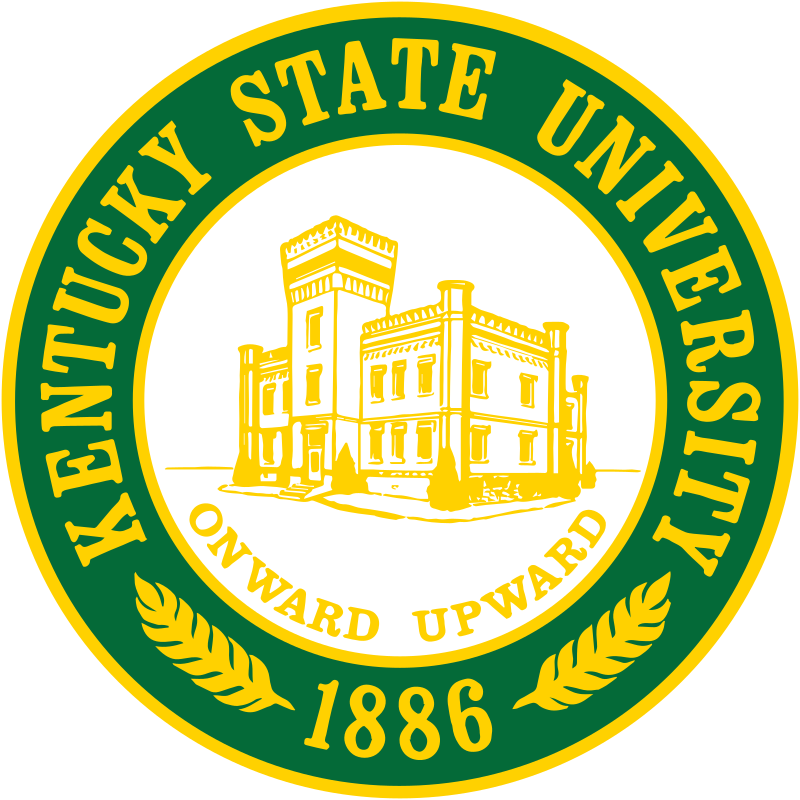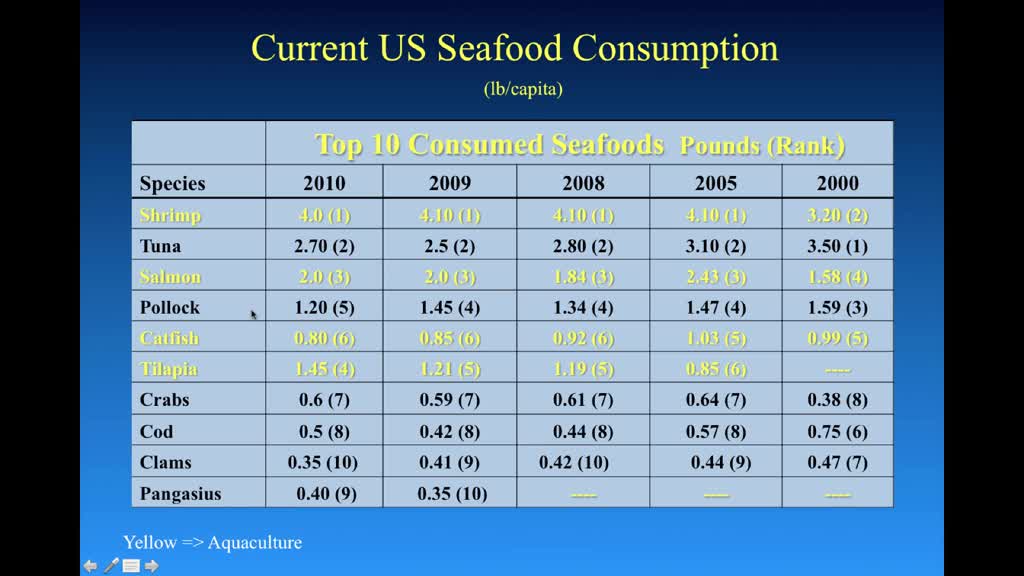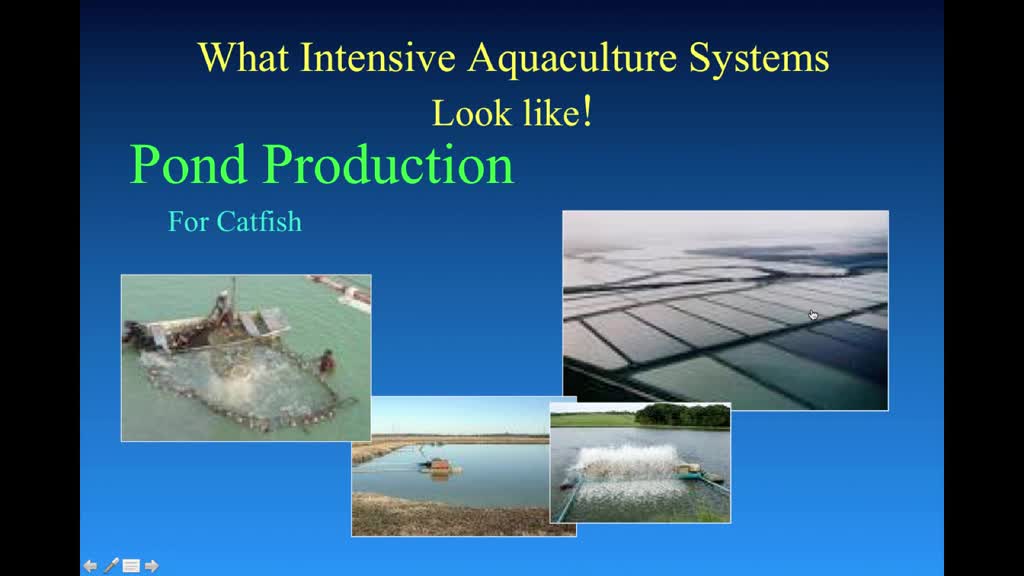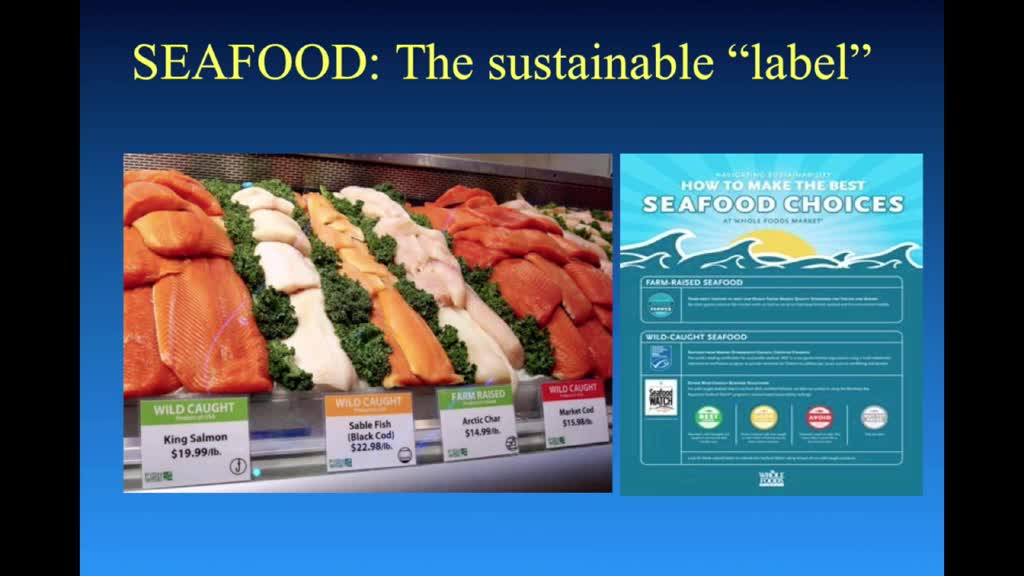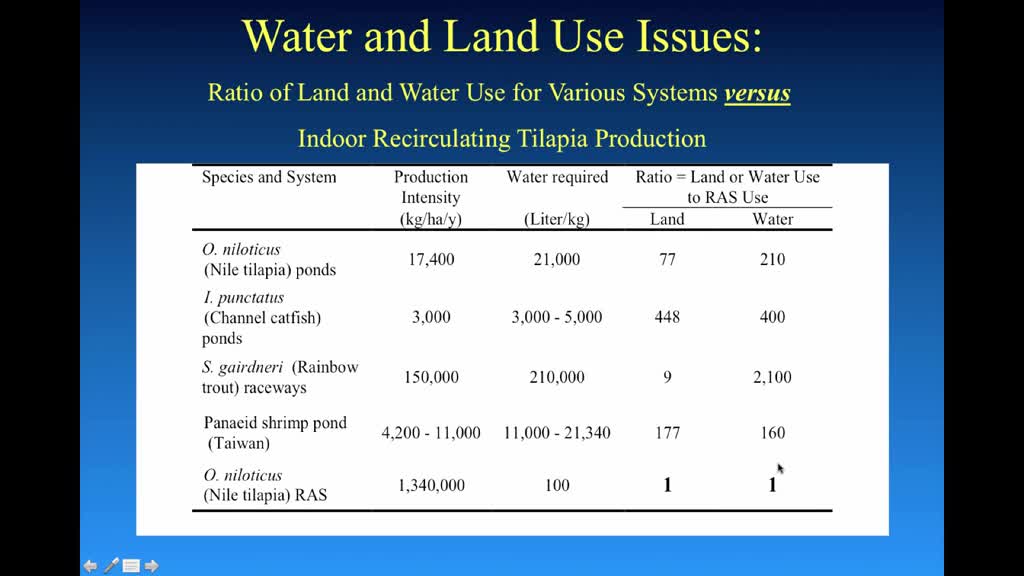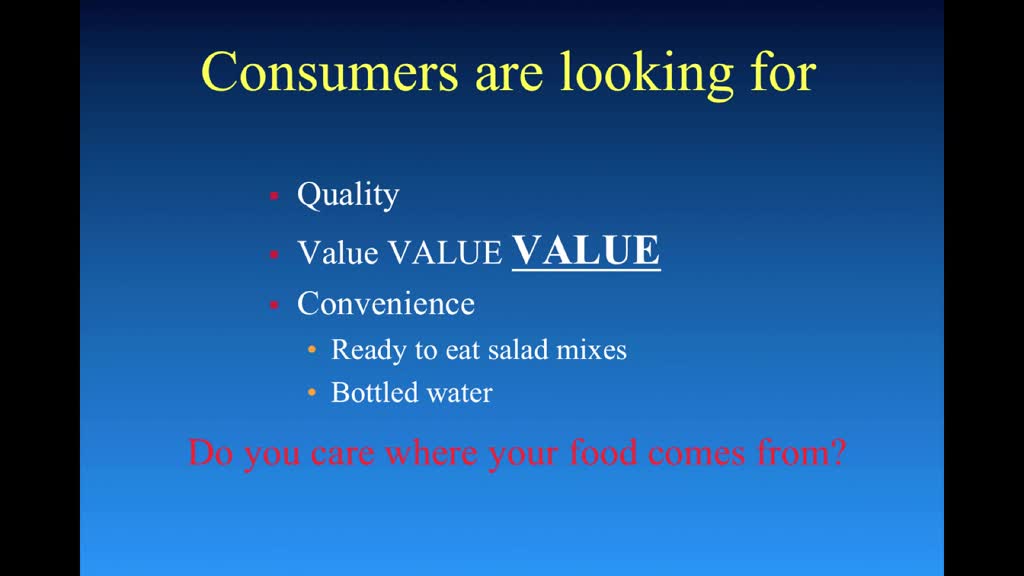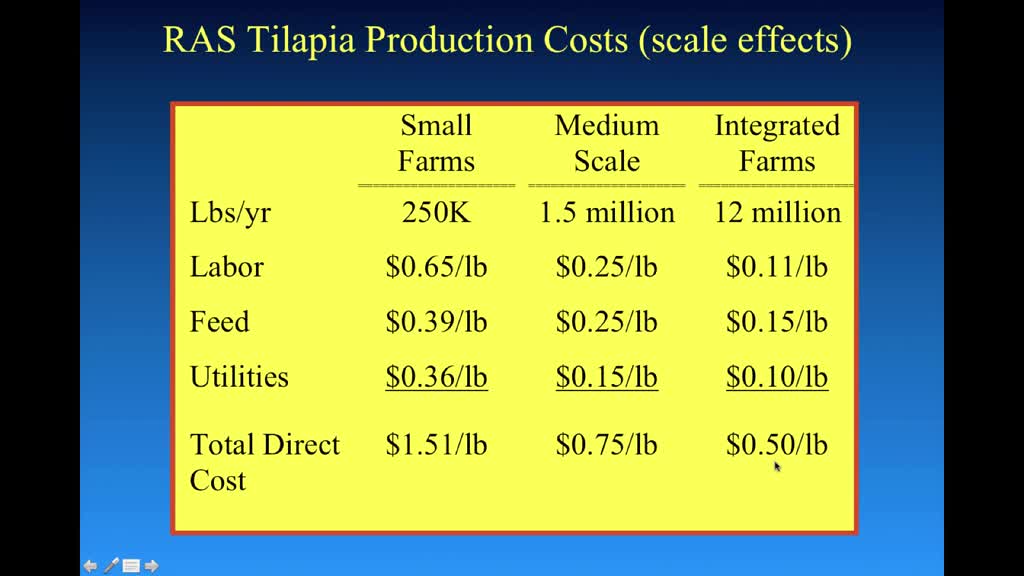Fish farming with aquaculture Systems - RAS
Learn fish farming with this complete aquaculture course. We will take you from zero to expert about raising fish. We will also teach you the secrets of building a successful fish farming business.
$299
Plus a FREE Textbook!!
Course Description
This self-paced course explains the basic engineering principles behind a successful recirculating aquaculture system (RAS) design. The objective of this course is to provide sufficient information so that you will be able to design, construct, and manage your own RAS system. Basic principles of business management and securing investment capital for the small family farm will also be reviewed. At the conclusion of the course, you will have received the essential information necessary to design your own system and have a fundamental knowledge of the principles influencing the numerous design options.
Course Includes:
- 14 modules.
- 11+ hours of video lectures.
- Reading assignments.
- Self-check quizzes
- One design workbook
- One final assessment
- Extensive supplementary videos
Topic Covered:
- Overview of recirculating aquaculture systems (RAS) engineering
- Water quality objectives, monitoring and measurement
- Fish growth and system staging
- Engineering design of individual unit processes
- System management
- Fish health management
- Economic and risk evaluation
After completion you will be able to:
- Examine how to design a recirculating aquaculture system, component, or process to meet production objectives
- Determine how to best select appropriate water quality targets
- Develop a capability to design pumping systems
- Build an analytical capability to quantify costs of production
- Identify the critical factors for managing a fish farm
Who should enroll:
- The course is structured to be relevant for a wide range of student experiential levels, from novice to expert. Course expects no prior knowledge, but some background in aquaculture is always helpful. The course textbook provides more in depth treatment on a variety of the topics and there are references as well on individual topics at the back of each book chapter.
- Individuals considering starting an indoor recirculating farm and at all stages, e.g., planning stages, early years of operation, and expansion of current operations
- Consultants to the industry
- University and high school teachers that include an aquaculture component in their classes
- Entrepreneurs
- People (aquaculturalists) currently managing flow-through systems
Instructor:
Michael Timmons is a Professor Emeritus & Graduate Professor in the Department of Biological and Environmental Engineering at Cornell University.
His program is centered on entrepreneurial-driven enterprise. He provides a foundation of information related to the production of aquacultured products, both fresh and saltwater, with an emphasis on sustainable and environmentally friendly engineering technologies. He works with private industry to improve technology of water recirculating systems for producing fin and shellfish. Each year for the last 15 years, he conducts a 1-week long short course on the principles of recirculating aquaculture.
Watch the First Module Below!
Module 1
Slide: 1-PTRRAS001_M1_introduction-to-world-aquaculture
Transcript:
Welcome to the first module in the first section of recirculating aquaculture systems. By
the way, here is an important acronym. That’s called RAS, R-A-S. So, maybe you can
RAS people now. Okay. So, we’re going to go to our first slide which is here. Okay. So,
part of this introduction is to give you some reasoning and possibly why you should be
excited about even thinking about studying the subject in the first place. And that is
because some of the statistics here. Okay? What are they? Seafood provides essential
nutrition for over 1 billion people. Two, more than 37% of the world’s fish production is
traded internationally. Three, seafood is the most globally traded protein of all the
commodities. Beef, pork, chicken, lamb, etc., etc. It’s the most highest volume of all
those different commodities.
Next, the value of the fish trade exceeds international trade and all other animal proteins
combined. 75% of our fisheries are considered to be fully or overly exploited. Wow. That
they’re overexploited, yeah, that means they’re not there and where is the fish going to
come from to feed all these people? Okay. Next point, more than 50% of all food fish
supply comes from aquaculture. Wow. 50% of all the fish are coming from aquaculture
at this point as opposed to what we call wild catch, what you traditionally think of where
seafood comes from. People going out boats and nets and things like that but 50% of all
our seafood right now comes from aquaculture. When I started in this subject 30 years
ago, that number was like 5%. So, dramatically increasing. Aquaculture should be
surprising. Aquaculture is the fastest growing food production system currently in
existence. 8% annual growth. Okay. Are you excited? I hope so. So, look, here’s that
statistic I showed you about where the seafood is coming from. Looking out here 2015,
you can see about half of it is from aquaculture. There is some distinction people make
between aquaculture product going into the food market versus fish products that go
into the animal feed markets.
So, about a third or so of the wild catch goes into fishmeal. Okay? So, when you
subtract that off, then the aquaculture component is actually more than 50% of the wild
catch component. Okay? And then you see the little red line here going up. I forgot I had
this cursor and show you going up and up and up and up and up. Right? We’re going to
have seven or eight, nine billion people by 2050. Right now, we’re at seven, six and a
half billion, just keeps going up. And as the economies improve, which they are
worldwide, that means their ability to buy higher value products i.e. proteins, meat
proteins also increases. Okay. Next slide. Okay. Well, what kind of seafood do we
consume? Okay. And you look across the top here. Here it states. Things haven’t
changed too much. Shrimp is number one and salmon and tuna and tilapia down here
so look. So, I got these things numbered now. So, one, two, three, four, five, six. Again,
here’s something very interesting. Tilapia in the mid-90s, this was zero. Okay. So, tilapia
has made huge inroads into supplying part of that seafood demand. The commodity
products here in yellow represent aquaculture. Okay?
So, yes, aquaculture. Future of marine fisheries, well, they’re in trouble. Marine fisheries
is 25% of the world marine resources are overexploited. 30% of our migratory animals
are under severe pressure. It’s a problem and it is actually is kind of interesting. One
thing is that the Earth is two thirds covered with water but there’s not much of that water
that’s actually productive for growing fish or supporting seafood life. There’s only a few
hundred miles from each of the shores. So, that’s pretty much why we’re at a steady
state value in terms of what the oceans are producing. So, that 90 million metric tons as
a reference point. And now, we produce about 90 million metric tons of seafood product.
So, here’s where the gap starts to be pretty evident. Our current world population is
about six and a half billion people, by 2050, 9 billion which gives us what? An 84 billion
pound gap in the need for seafood product. Where is that going to come from? Well,
that’s why you’re taking the course because we think with good evidence that that is all
going to come from aquaculture and you’re going to learn about recirculating
aquaculture because it conserves It’s the most sustainable form of aquaculture. Okay.
Here, it shows you these supplies, what was happening. So, the wild catch you see, you
get different numbers here but it’s somewhere around 100 million metric tons, 90 million
metric tons and with good management, we think we might be higher but this is probably
an overestimate.
Aquaculture keeps popping up, going up up up up up. Okay? And our percentage is
about 50% at this point. Okay. So, the per capita and important number for you to
realize is per capita consumption, that’s about worldwide, we think is probably in the 17.
This is kilograms so it’s about 17 or 38 pounds. This is per capita and that’s an
interesting number in itself because some countries, say Japan for example, might be
100 kilograms per capita and other countries might be two or three. My belief is that
given a well-priced or competitively priced product against the other meats, people will
choose seafood. Anytime you see numbers that are less than 15 or 20 kilograms per
person for that particular country, that means there’s a lot of opportunity. Okay? Where
are these fish going to come from? Well, relative to the U.S., we import almost all of our
fish. Most of these fish, the supply is going to come from low-income countries where
labor and environment where regulations tend to be less stringent. The environment is
going to be a concern. Are these countries able to supply products to western countries
where environmental issues are of a concern, versus, just simply price. And why is it
that the U.S. can’t compete? Well, maybe it’s because our products cost too much.
Okay. That wraps that one up folks.
Slide: 2-PTRRAS001_M1_fish-production
Transcript:
Where are all these fish going to come from, you might ask? Right? Where are they
coming from? Okay. This is what most people think of when they think of fishing, you
know, where am I going to get the fish to eat for dinner tonight? And they think of a guy
standing here, with his fly rod, or whatever, and this huge lake. Well, yeah. Okay. But,
here’s a key distinction, between what people perceive, in terms where their seafood is
coming from versus reality. The density of fish in such a lake like this, we live next to a
lake that’s in the Finger Lakes region, the lake I lived next to Cornell University, is 60
miles long, three or four miles wide, and five or 600 feet deep. And how long does it
take to catch a fish out there? Well, to catch one legally sized trout, takes like, 45 hours
of fishing. Can you believe that? In other words, it takes forever, because there aren’t
hardly any fish out there, and the reason is, because if there were more fish out there,
they would all die. Yeah. They would all die because of disease issues. The natural
environment is full of vectors, which will contribute to fish disease. You just can’t do,
they’re not very dense. But aquaculture, it looks like this. Okay? And look, there’s pretty
high densities.
Here’s underwater sea cages. These represent raceways. These are intensive ponds.
This is rope culture, anyway, very very dense. Okay. Another shot here. Here’s
raceways, where the water comes in at one end. These are concrete walls, that divide
each raceway. When water comes in at the top, you can see that the water coming in
here, goes down through. There’s a fairly rapid exchange of water, to maintain the water
quality environment necessary, to support the fish. Another shot of an indoor raceway.
Okay. The thing to remember here is that, we have a term called hydraulic retention
time, and that’s- if this raceway was totally empty, and I started filling it with water, how
long would it take to fill it up? So it was all empty and I filled it up in 35 minutes, we say
that has a hydraulic retention time of 35 minutes. Okay? So, it’s what we’ve called
turning over every 35 minutes. Raceways typically have a HRT’s that are about 15
minutes, so they turn over very rapidly. And so you can imagine, if I’m turning over this
raceway every 15 minutes, it takes huge, I say huge, quantities of water.
The other most common thing, we see around the world are ponds. For aquaculture,
here’s some munch catfish ponds. These things are typically rectangles. They’re going
to be. two-three-five hectares in size, but a very interesting thing here is, you notice how
the ponds are all different colors? Well, that’s because they all have different water
environments. So this is not a repeatable or a duplicate set of ponds because the
environments are all different, in each one of them. So how are you going to reproduce
fish on a repetitive basis? Ponds had a lot of challenges. They also used quite a bit of
water just because of evaporation. That’s what I call a mature technology. And at least
in the United States, the ability to produce fish on a cost competitive basis with
worldwide produce fish, it’s a constraint right now. It’s difficult to do that. A lot of our
ponds in South Alabama, Mississippi are being converted actually back into dry land
production. So it’s kind of ironic. It went from cotton production, in the 40’s and 50’s, into
catfish production in the 60’s, 70’s the 40, 50 years, and now about a third of all that
acreage, has been re-purposed back into the dry land culture, soybeans typically. In
here, some more of these intensive- this is net pens. So primarily, aquaculture is when
these two sources, either raceways, ponds, or net pens.
Net Pens have some bad publicity. A lot of bad things are said about them. Most of
them not being true, such as they attract sea lice, and then when migrating, salmon
swim by, the sea lice go out and attack the migrating salmon. It’s kind of absurd. Also,
the net pens, produce a lot of waste material, which they do, it collects on the bottom of
the ocean floor, and then has a large pollution source, and degradation of water quality.
That could be true, in the case where the net pens, are not sited properly. But the key
thing on net pen production is that they are sited, where the tidal exchange of water is
large. So the 24-hour cycle, twice a day, you might get 5 to 10-meter changes in
elevation in the ocean level, and so that causes a large amount of flushing that occurs.
So net pens are- there are also mature technology. Almost 2/3’s of our salmon come
from net pen production. Most of the salmon, comes from three areas: Chile, Eastern
and Western Canada, and Norway, primarily. And it’s pretty well, equally spread, among
those three locations. Then we have Recirculating Aquaculture Systems, and the
acronym is what? RAS. So, here’s some examples of indoor, quite nicely done I would
say. This actually is a big sturgeon farm. This is actually a raceway configuration; here
are round tanks. Here are outdoor tanks. I think this is actually a project we did in Haiti.
This is a RAS system.
Slide: 3-PTRRAS001_M1_the-importance-of-sustainability
Transcript:
One question that you need to ask yourself is: how am I going to sell my fish? That
should be the number one question always on your head. Well, that means you need to
be thinking about sustainability. What’s sustainability all about? Well, this is obviously
the, most of you are aware, right? This is a big, hot topic right now for the last several
years. And sustainability means a lot, to a lot of different people, but there’s this
economic, and environmental, and social interaction. And, I say, there’s a lot going on
here, but you need to be thinking about it, okay. And the thing we have going for us, is
that we are classified as the most sustainable aquaculture system that is available to
producers. So the green, what we call the green people, the environmental groups they
all kind of, they kind of recognize that people have to eat food, and if you’re going to eat
food, it’s good if it can come from a sustainable source. And Recirculating Aquaculture
Systems, RAS, are definitely sustainable.
What is sustainability? Here’s the definition; meeting the needs of the present without
compromising the ability of the future generations to meet their own needs. Yes, so
that’s kind of the bedrock of that. And this is a little bit dated, 2011, but things haven’t
changed much. In menu trends, National Restaurant Association, you can see the
things that were moving, seafood. Well, what are they? Locally sourced, locally grown,
sustainability, nutritious, nutritious kid’s lunches. Number seven, sustainable seafood.
These things are continuing. The big things are locally produced, locally grown, and
sustainable. That’s the current buzzwords. Just looking and I’m, here’s a local
supermarket and just look at what you’re seeing, right; Wild caught, wild caught, farm
raised, wild caught, it seems to indicate that there’s a preference for a wild caught, but
things are being labeled.
Farm raised, does it- Does farm raised have a good connotation or a bad connotation?
Well, most people would view it as positive, but some people will view it as negative.
Yeah. Walmart, okay, the big mega group, right. They made a commitment to
sustainable seafood by requiring a third-party certification of their suppliers. Okay, so
you’re producing a product for Walmart, you’re going to have to go out to get a third-
party certification in order to certify you that you are a sustainable source. Seafood
Watch, another environmental watchdog defines sustainable seafood as the following:
sustainable seafood is from sources or fished or farmed that can maintain or increase
production into the long term without jeopardizing the structure or function of affected
ecosystems. Product types; farmed, wild seafood, fresh and frozen. There is a seafood
certification program by the Marine Stewardship Council. There’s other equivalent
groups doing the same thing. Farmed Seafood Certification requires using best
aquaculture practices or an equivalent. So you’ll see, groups we’re looking for the
Marine Stewardship Council and best aquaculture practices. That’s what we’re looking
for, okay? So remember that. If you want to sell your seafood, your aquaculture product,
think sustainable.
Slide: 4-PTRRAS001_M1_benefits-of-recirculating-aquaculture-technology
Transcript:
Why do we want to use recirculating aquaculture technology in the first place? Okay,
let’s look at some of the reasons. Well, first, I got to tell you why you had to be listening
to me. Okay? I’m not just an academic. With my own money and my house on the line,
we put up a million pound per year indoor recirculating agriculture production system in
Upstate New York, to produce Tilapia. By the way, Tilapia is a tropical species, meaning
they need like 28 degrees C 80 degree water. And, Upstate New York is really really
cold. Okay, so, recirculating aquaculture. Wow. How could you produce a tropical
animal in an upstate cold environment? Well, that’s because we recirculate the water.
Here is just a shot of the outdoors. It was about 40,000 square feet. Looks like a big
dairy barn and then, here was an inside shot round tank technology, etc, etc. okay.
Okay.
So, here’s a little bit about Tilapia. That farm was built back in the mid 90s and we
actually programed 1996 or 97. And my business plans and such were showing like,
Okay, well Tilapia is going to become really big. So, this is a disruptive technology and
so, yes invest in me. Okay. Well I couldn’t get any investors. Hardly. So primarily my
brother and myself financed this first farm. Anyway, my predictions came true.
Producing a lot of Tilapia. Okay, everybody knows it. But back to the point of this video
is, why do we reuse water? Well, the whole bunch of reasons, okay? But the primary
reasons are, you reuse water so you’re not using this valuable resource. And it’s
probably the most valuable resource we have. So, using it to flow through a system that
uses huge quantities of water is just not sustainable. The other thing is, is that the less
water you use, the less water you have to treat in terms of discharge. Okay, as an EPA
and any kind of environmental regulation on what you do with this discharge water.
The second big reason is, in a recirculating system, the water that you put into your
tanks has to be water that you, yourself, are willing to drink. As in, there’s actually no
disease organism being introduced into the water. So, when you do that, the less water
you need, the more cost effective you’re going to be. Also, once you’ve started to
circulate the water, you can control the temperature very closely. Which means, you can
optimize that environment to the animal you’re trying to grow. Minimizing water use
deals with bio-security, makes it much easier to control that in terms of keeping disease
organisms out. And if you don’t need much water, that means you can put your farm
where it needs to be located from a market sense. So, Water Reuse System, there’s
three basic types, there’s serial reuse, that means goes down, comes back. We don’t
really talk about those, it still uses a lot of water. We’re talking about full re-circulation
and this then means you’re talking about something zero, which is almost impossible,
but five to 15 or 20 percent water exchanges a day.
So, if you had a hundred thousand gallons of water in your farm tanks, 100,000 gallons,
that means 15 percent you’d be throwing away 15,000 gallons a day. If you had 100
gallons, you’re throwing away 15 gallons. This is water, this discharged which has to be
replaced. It’s not the recycle. This is a reference point back to the Tilapia farm that I
showed you earlier. I ran that farm on a hose, doing about 20 gallons per minute. And
we circulated 30 million gallons of water a day. 30 million gallons of water a day
recycled. I used to raise money with investors, and say, hey, I produced fish with no
water. And they go what? No water? I go, well, a little bit. Okay, Well, this slide just kind
of shows you that, what I mean by none, okay. So, here’s a big table, here is the steps
on your yellow book which you all received and you’re supposed to be reading prior to
this lecture.
Here’s my Tilapia farm. The ratio is on itself of course is one. Okay. Wow. What if I was
doing a raceway? I would use 2000 times more water than I would use in my Tilapia
indoor farm. Ponds, somewhere around two to four hundred times more water than I
would in my RAS and similar ratios in terms of land use. So, it doesn’t take much land
and it takes very, very little water. Okay, design. Just a brief one on that and we’re
looking here. Here’s our fish tank, and are we talking Okay, there is one nice loop here,
where we’ve got to remove our solids. We got a bio-filter the water from the ammonia
and the nitrate, and we have a disinfection loop. We’ll probably have the carbon dioxide
removal loop. We’ll have fine solids stuff that goes. This is the material that goes
through a window screen. And then of course, we have to aerate and oxygenate the
water. Okay, So, that leads you to, from an engineering standpoint, is that we feed the
fish, say a kilogram of feed, or a pound of feed and we have all these production terms.
Okay, we produce about 0.03 units of ammonia for every and in the feed about a half a
unit of waste material on a dry basis for every unit we feed. In other words, most of what
is fed comes out as waste product. We produce a lot of carbon dioxide, we use a lot of
oxygen and will consume something called Alkalinity, which is a future video lecture. But
these are the engineering numbers we need in order to design the system. Okay, just
give you some ideas on what these systems look like. Generally, here’s a mixed-cell
raceway, which we’ll talk about also in our future video. We will produce about we will
carry. I say that, the density is 80 kilograms of fish per cubic meter of water. That’s
about 0.7 pounds per gallon. While we’re turning this tank over twice per hour.
Recycled, center drains, side drains and micro screens for taking out solids.
Just a general idea of what a footprint might look like in a production farm. You can see
here’s the building and the fish tanks. You know, I take a fraction of that footprint. If
you’re if you’re growing tanks occupy 25 percent of your building footprint, you’re doing
pretty good. Okay. So, the building has to be a lot bigger. And another configuration we
designed, this for sturgeon, these are trying to mimic around tanks, put together in
terms of a central collection area, first solid removals and recycling. And, here’s a
shrimp farm that we designed, again with mixed-cell raceways. Again, just to give you a
sense of what footprints might look like, you always had to be aware that you’re going to
need you know an office and a lab and a break room. Areas for feed storage and
restrooms and hatchery areas and purging areas etc., etc. Here’s just a quick overview.
Here’s a mix-cell, what we call boutique, meaning small production. This is about 20 feet
by 60 feet. This will produce probably 20,000 pounds a year of Tilapia. Okay, here’s our
fingerling. Well, here’s our fries stage goes to fingerling stage and then to grow out
stage again and make sure you have your lab office, crew room, restrooms, et cetera, et
cetera. But this is all put down into about a 50 by 50 area to give you a sense of scale
and what kind of size is needed. Okay.
Slides: 5-PTRRAS001_M1_economic-drivers-to-consider
Transcript:
What is your success going to depend upon? Number one, low cost production is
number one. You got to produce the product so they can compete against other
products in the marketplace. It’s as simple as that. Oh, produce inexpensively. You need
to be sustainable. You have to have appropriate technology which gets back to your
low-cost production, i.e., capital cost. Appropriate technology is going to be very
country-specific, mostly related to what you are being charged for your labor, or your
cost to dispose of discharge of flood. And then, you want to match production to an
appropriate market. This just shows you, again a little bit dated, apologize about that,
but to put it in perspective, one access is poultry. Here, these are thousands, these are
50 millions, 60 millions. These are tons, thousands, billions. 50 billion, 60 billion, okay?
Here is aquaculture. And thousands. Okay. See the difference in scale? And this is our
aquaculture. Okay? Not much. Oh that’s broiler. Whoa. Okay.
Where is aqua- Salmonids? Okay. Here’s Salmonids. Okay. But it is accelerated.
Anyway, yeah, aquaculture is growing but compared to the other meat products, it’s just
incontestable. What are consumers looking for? Quality, value, value, value. I.e., I want
something really, really good. I want it to be good for me but I want it to be inexpensive.
So, there’s an interesting study. The economists do this a lot. But, of all the attributes of
a product that drives sales, 90% of that can be attributed to price, 90%. Okay. Here’s
some challenges for you. Look at this. Okay. We’re talking about tilapia. You get about a
30% yield. Better these days, maybe as much as 35%. But, just to keep numbers
around so you can follow them easily, if the farmer can produce the product for a dollar
per pound, what would the retail cost end up being to the consumer? Okay. So, there’s
the farmer. Farmer gets a margin. There’s yield on the fillet. There’s margin for the
processor.
There’s wholesale margin, distributor margin, retail margin, retail price, $7 a pound.
Okay? Well, that’s pretty high. Okay. Can you compete? Okay. Back to the salmon,
okay? Look at the growth. Okay, this has shrunk dramatically since then. We’re down to,
probably about a 3%. Our steady growth, they pretty much maxed out the production
sites. Seafood consumption. Okay, look what happened. About mid 80s, this is when I
started. Okay, this was the shift in the American diet to white meat. And, this also led to
the increase in seafood. But it’s pretty much stayed here. It’s still the same. Okay. 2009,
it’s still about 16 pounds per capita. Okay. It just hasn’t changed. And the reason is,
because the cost in the grocery store or the seafood counter, also has not changed. So
remember that you’ve got to compete, you’ve got to compete, and you’ve got to
compete really on price. And, the consumer demands quality, which you have to
provide.
Slide: 6-PTRRAS001_M1_how-to-compete-in-seafood-markets
Transcript:
Let’s review. How’s the seafood, how are we going to compete? Why has seafood
consumption stay flat? Why can’t we mimic the explosive growth of the poultry industry?
Well, let’s look at the poultry industry. Well, look at marketing and scale of operation.
Here’s what we commonly see where people who are marketing seafood, they’re here
next to the ocean. Here’s a bay and people set up here, take fish right off the ocean,
right off the boat, sell them. But the scale, there’s no scale there, so there’s no economy
of scale. But back in 1943, what happened? Well, a guy named Jesse Jewell, he had
this vision for how the broiler industry could become successful. And, he
successful. And it initiated a period of 20 percent growth for indoor chicken broiler
businesses for the last 50 years. It’s amazing.
So back in ’43, chicken was very, very, very expensive. And now, you go in the
supermarket for the last 35, 40 years. And it’s one of the most economical choices of
meat. Now, why is that? Also, well, one of the reasons is the broiler industry keeps
adapting to the market. And way back here, this is called ready to cook, as in whole
broilers. So, way back then, the ready to cut growth is going up, up, up, up and the
growth percentage though eventually level up, but this is 5 percent sustained growth.
And how do they do that? Well, here’s the key point. Back in the ’60s and whatever, the
whole broiler was 80 percent plus of the market. Cut-up was very small. You dropped
down here and has even gotten a little bit further than this is the cut-up in the further
processing. Products make up 90% or 95% of the current product mix. They keep
adapting. So keep that in mind. We all adapt to the market. What does the consumer
want?
Now, let’s look at some scale effects. Big farms, large integrated farms, and little farms.
250,000 pounds per year, that’s 20,000 pounds a month. That’s probably pretty big to a
lot of you. This was the size of my farm, my tilapia farm and this is what I hoped it would
grow into but I never got there. And you can see making the point, labor becomes more
efficient. Feed becomes more efficient because you’re buying in larger quantities and
utilities become more cost-effective because you’re buying them at different scales
again also, believe it or not, particularly oxygen and heat. So this does pretty dramatic
things to scale. Well, if you could get to these large farms, I’m pretty sure that you would
be competitive in the fillet market. Here’s some costs.These are, again, these are also a
little bit old, dated. This is not too far off. Depends upon the feed price. How big this is
going to be. So, this is where we are. Here’s one of the upsides here in terms of long-
term future of indoor or called aquaculture in general. Looking at the different
components that make up the cost of feed in terms of the metabolic energy of the diet,
the fat, the corn, the soy, fishmeal, fish oil. Different commodities have different ratios of
those. But you go down here to the blended ingredient cost, dollars per ton. Hogs and
broilers are by far the cheapest, salmon being very expensive primarily because of the
fishmeal component and fish oil.
But what’s our advantage? Our conversions and tilapia and salmon are almost one to
one and conversions on hogs and broilers are around two to one. So, if you multiply
these by two because it takes two units of feed for every unit of animal versus one to
one, two times this equal at 300. You can see tilapia we have an advantage and salmon
becomes comparable. Can RAS compete? And more particularly, why you’re taking this
course, right? And we can. Out reminder, the catfish people pond side just goes up and
down depending on the year. 0.70 per pound, farm, pond, meat in the whole fish, 45%
yield tilapia. We would have– in order to be the same as this, because we get a lower
yield, we’d have to produce tilapia for 0.50 cents a pound, which we can’t do. So we got
to work on our cost of production. And brother, this is a reminder. Look at that. This is a
mature industry. But look how far they’ve come in terms of productivity per person, a
million–a thousand times million kilograms per person. The net ponds, this is one-tenth became
of that. And you can imagine it’s much, much worse in terms of small-scale production.
And a broiler production system for the labor, the capital cost, the utilities, they’re only
paying about 0.10 cents per kilogram for all of this combined. It’s dramatically cheaper
than where we see in fish. Positive side is the broilers take twice as much feed as our
fish do, and our productivity per unit space. For broilers, it’s only about half what we can
do in indoor fish farm. So, that’s our advantage. So, let’s work with it and the future
could be considered to be bright.


